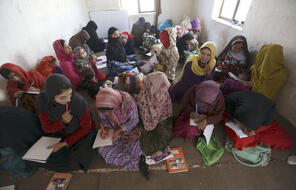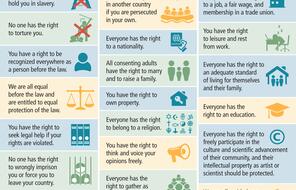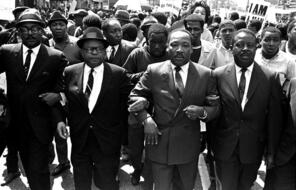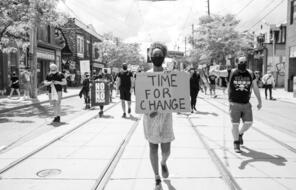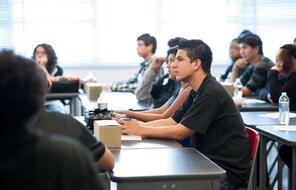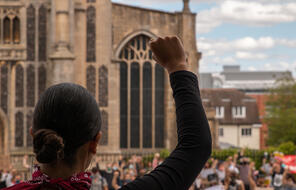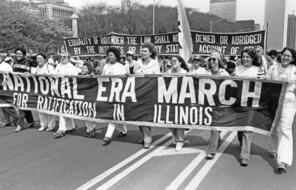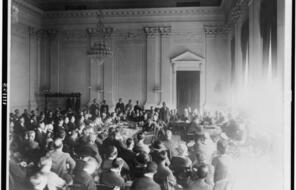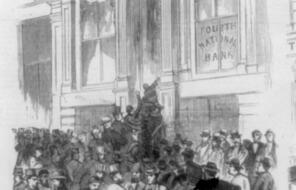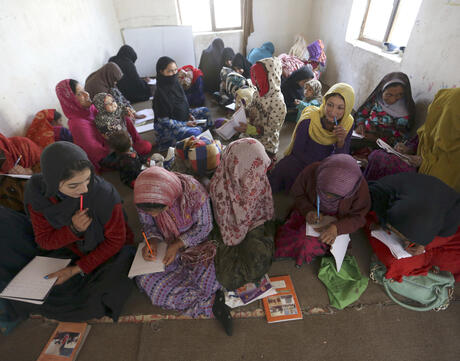
Human Rights in the News
At a Glance
Language
English — USSubject
- History
- Social Studies
Grade
6–12- Human & Civil Rights
Overview
About This Mini-Lesson
On December 10, 1948, the United Nations adopted the Universal Declaration of Human Rights (UDHR), a historic commitment to universal rights. Now, more than 70 years later, how widely respected are the rights enshrined in this document? The news is full of stories about people fighting to have their rights recognized; for example, people protesting for women’s rights and political rights in Iran, organizing to protect the basic rights of asylum seekers and refugees around the world, and campaigning to protect the Uyghur ethnic group in China.
This mini-lesson helps students explore what human rights are, which rights are included in the Universal Declaration of Human Rights, how human rights connect to current news stories, and how people can help promote human rights. If your students are unfamiliar with the concept of human rights, we suggest you begin with activity 1 or activity 2. Each activity can be used on its own or taught in any combination best suited to your students.
Activities
Activities
Materials and Downloads
Resources from Other Organizations
Unlimited Access to Learning. More Added Every Month.
Facing History & Ourselves is designed for educators who want to help students explore identity, think critically, grow emotionally, act ethically, and participate in civic life. It’s hard work, so we’ve developed some go-to professional learning opportunities to help you along the way.
Exploring ELA Text Selection with Julia Torres
On-Demand

Working for Justice, Equity and Civic Agency in Our Schools: A Conversation with Clint Smith
On-Demand

Centering Student Voices to Build Community and Agency
On-Demand


